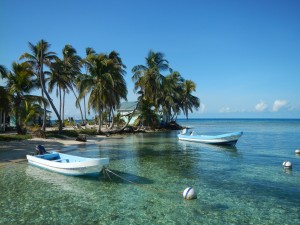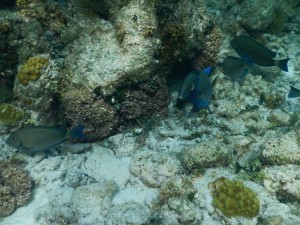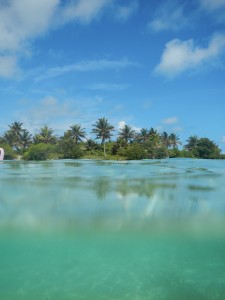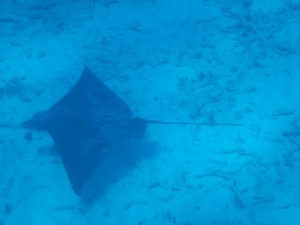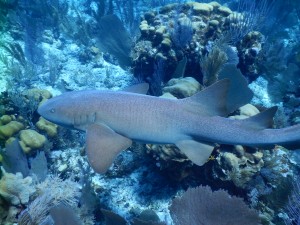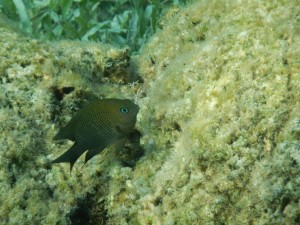Today was one of the best snorkeling days. We started the day snorkeling on the back reef. We were doing a diversity study and were trying to collect as many species as possible. There were so many different organisms. Immediately, we stumbled across a baby nurse shark hiding in the seagrass. A few minutes later, a spotted eagle ray appeared and swam by us. I have decided that my favorite fish are a porcupine fish and a trunkfish. They both look like they shouldn’t exist and are defying nature. While searching for the different species on the reef, I saw some very large lobsters.
On the back reef, I also finally saw all of the herbivorous fish on my taxon sheet. I finally saw the juvenile Pomacanthus paru French Angelfish and a Juvenile Pomacanthus arcuatus (Grey angelfish). The final fish I saw was a Acanthurus chirurgus (Doctorfish).
At around 10:40, we got back with all of our organisms. While sorting through the all the material, I discovered a baby octopus sliding toward the drain. I quickly scooped him out and placed him in a bucket. When he entered the bucket, I saw him ink a cute little splotch of black ink. We also found some fire worms, brittle stars, and lots of crabs.

For most of the afternoon, we did data analysis and presentations. But after we finished everything, we went for a quick snorkel before dinner. The water was really rough but it was really fun! We saw a really huge nurse shark! Today, was really fun!














